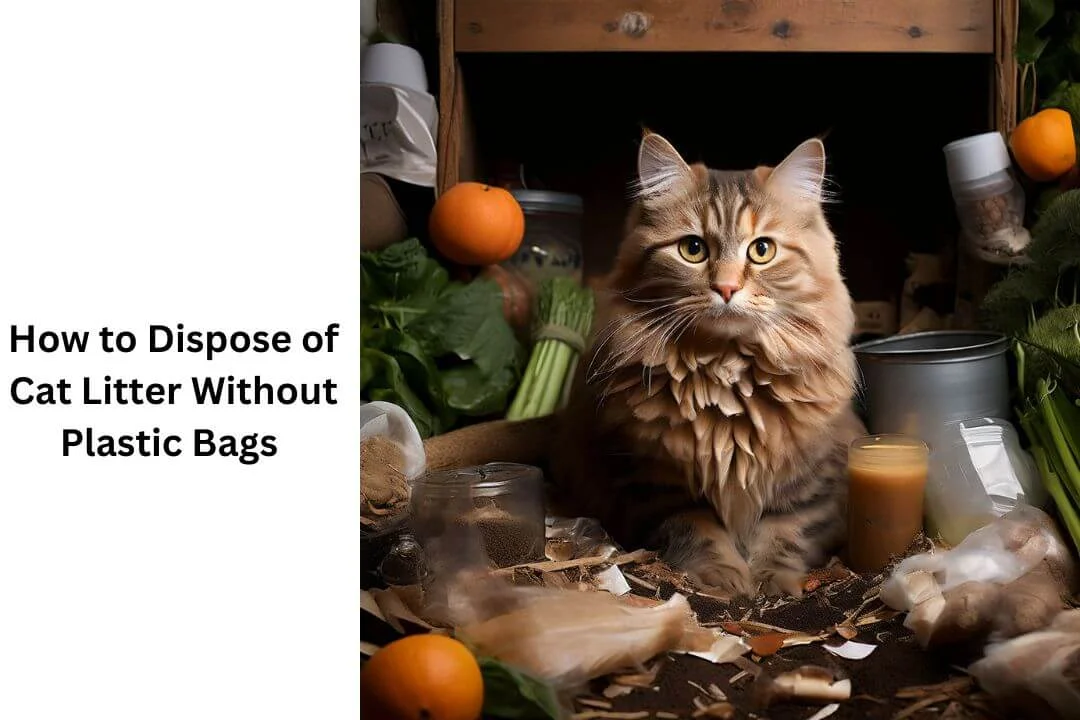How to Dispose of Cat Litter Without Plastic Bags
Introduction
Disposing of cat litter properly is essential for maintaining a clean home and protecting the environment. While many cat owners rely on plastic bags for litter disposal, these bags pose significant environmental hazards. Let’s explore eco-friendly ways to dispose of cat litter without relying on plastic bags.
Understanding Cat Litter Types
Clumping vs. Non-Clumping Litter
Cat litter generally comes in two types: clumping and non-clumping. Clumping litter forms solid masses when wet, making it easier to scoop. Non-clumping litter absorbs moisture but doesn’t form clumps, requiring more frequent changes.
Natural and Biodegradable Options
Consider switching to natural and biodegradable litters made from materials like wood, corn, wheat, or paper. These options are safer for the environment and can often be disposed of more sustainably.
Why Avoid Plastic Bags?
Environmental Impact of Plastic Waste
Plastic bags take hundreds of years to decompose, contributing significantly to landfill waste and pollution. They often end up in waterways, harming marine life and ecosystems.
Health Concerns for Humans and Pets
Plastics can leach harmful chemicals, posing health risks to both humans and pets. By reducing plastic use, you can contribute to a healthier environment and protect your family’s well-being.
Alternative Disposal Methods
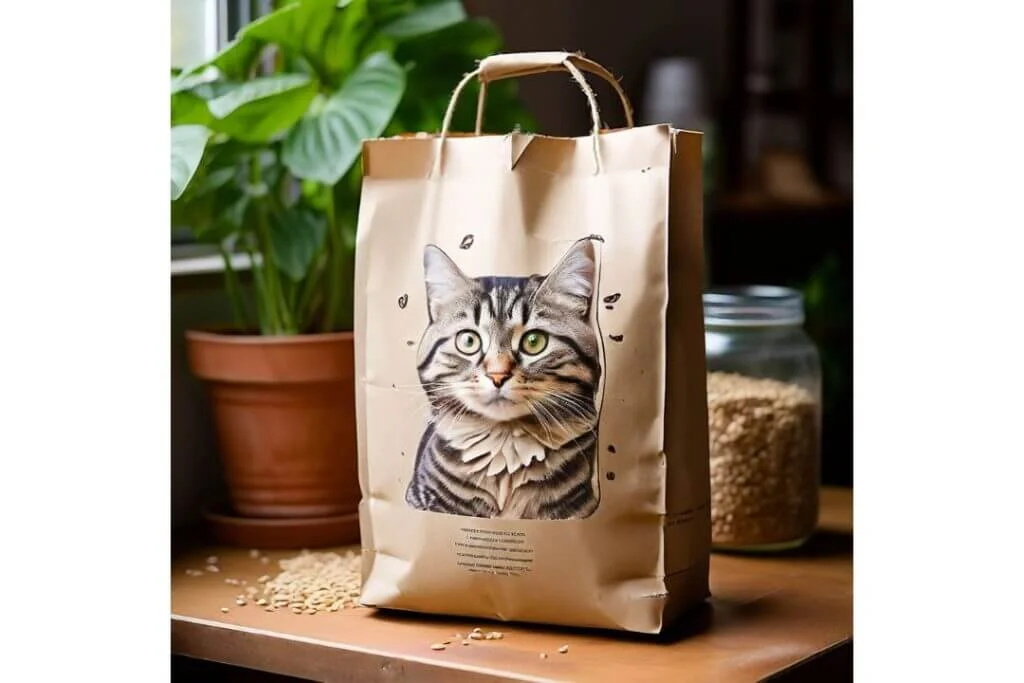
Composting Cat Litter
Suitable Litter Types for Composting
Only certain types of cat litter are suitable for composting. Natural litters made from plant-based materials like wood, paper, or corn are ideal. Avoid clay-based and silica gel litters, as they do not break down properly.
How to Compost Cat Litter Safely
Composting cat litter requires careful handling. Always use a separate compost bin for pet waste to avoid contamination. Ensure the compost pile reaches a high temperature to kill pathogens, and do not use composted cat litter on edible plants.
Biodegradable Bags
Types and Benefits
Biodegradable bags break down faster than traditional plastic bags and are made from natural materials. They offer a convenient and eco-friendly way to dispose of cat litter.
How to Use Them Effectively
When using biodegradable bags, ensure they are disposed of in a way that allows them to break down properly. Avoid sealing them in airtight containers, which can hinder decomposition.
Paper Bags
Advantages and Disadvantages
Paper bags are a simple and effective alternative. They decompose naturally and can be composted along with the litter. However, they may not be as strong as other options, so handle them carefully.
Best Practices for Disposal
Use sturdy paper bags and double-bag if necessary to prevent leaks. Dispose of them in a compost bin or a dedicated pet waste disposal system.
Reusable Containers
How to Implement and Maintain
Reusable containers can be an excellent way to reduce waste. Line the container with biodegradable liners and empty it regularly into a compost bin or commercial composting service.
Setting Up a Home Compost System
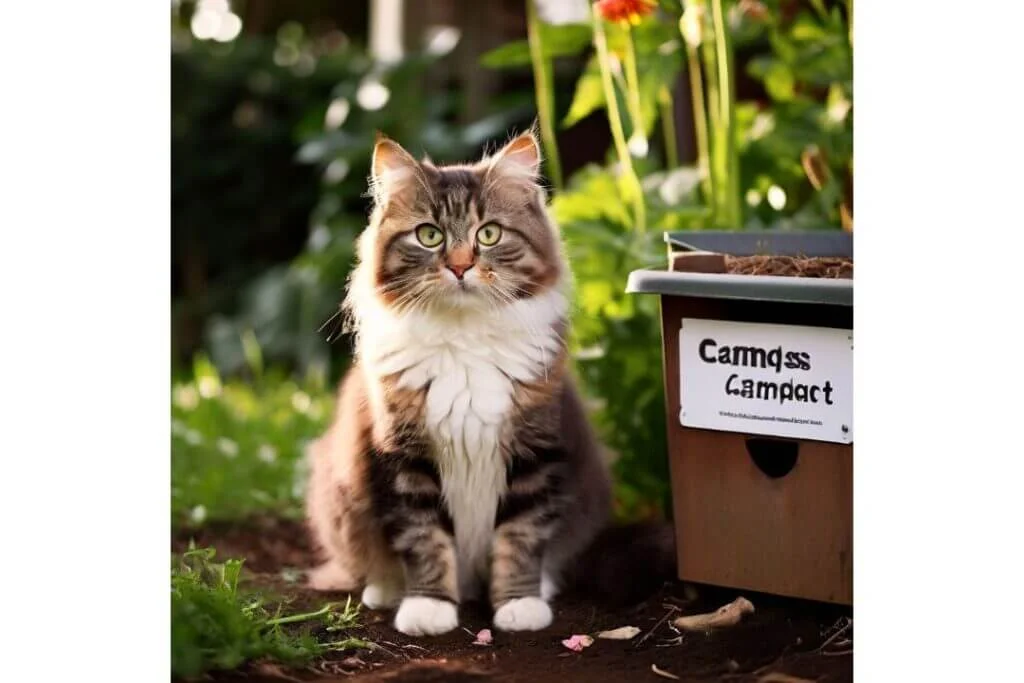
Materials Needed
To start composting cat litter, you’ll need a compost bin, a mix of green (nitrogen-rich) and brown (carbon-rich) materials, and a good supply of natural cat litter.
Step-by-Step Guide
- Choose a Location: Place your compost bin in a sunny spot.
- Add Materials: Layer green and brown materials, adding cat litter in between.
- Turn the Pile: Aerate the compost regularly to speed up decomposition.
- Monitor Temperature: Ensure the pile reaches high temperatures to kill pathogens.
Maintenance Tips
Keep the compost moist but not soggy, and turn it regularly. Monitor for pests and avoid adding meat or dairy products, which can attract unwanted animals.
Commercial Composting Services
Finding Local Services
Many areas offer commercial composting services that accept pet waste. Check with local waste management facilities or search online for providers.
What to Expect
Commercial services typically provide bins for collection and process the compost in large-scale facilities, ensuring proper decomposition and pathogen control.
Flushable Cat Litter
Types of Flushable Litter
Flushable litters are designed to break down in water and can be safely flushed down the toilet. Common materials include corn, wheat, and wood.
Environmental and Plumbing Considerations
While convenient, flushing cat litter can strain plumbing and wastewater systems. Check local regulations and use sparingly to avoid blockages.
Using Alternative Litter Disposal Systems
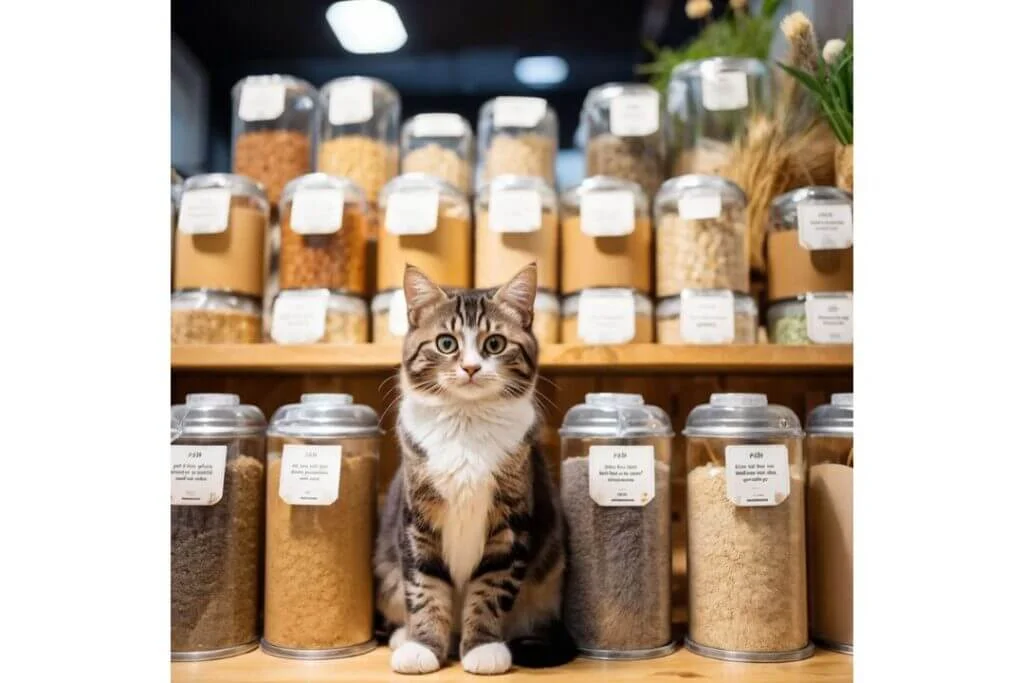
Litter Disposal Stations
Litter disposal stations offer a hygienic and convenient way to manage cat waste. These systems often use biodegradable liners and can be emptied into compost bins or commercial services.
Litter Waste Digesters
Litter waste digesters break down waste through microbial action. They can be an excellent solution for reducing waste volume and odor.
Community Solutions
Community Composting Programs
Participate in or start a community composting program. This approach not only manages waste effectively but also fosters community engagement and environmental responsibility.
Neighborhood Initiatives
Encourage neighbors to join in sustainable practices. Host workshops or create informational materials to spread awareness about eco-friendly cat litter disposal.
DIY Cat Litter Disposal Projects
Creative Reuse Ideas
Get creative with DIY projects, such as repurposing old containers for litter disposal or making your own biodegradable bags from household materials.
DIY Biodegradable Bag Solutions
Craft your own biodegradable bags using materials like newspaper or compostable fabrics. This can be a fun and sustainable way to manage cat litter disposal.
Educating Cat Owners
Importance of Spreading Awareness
Educate fellow cat owners about the environmental impact of plastic bags and the benefits of alternative disposal methods. Awareness is key to driving change.
Tips for Talking to Other Dogs Pet Owners
Share tips and resources, such as local composting services or DIY projects. Be patient and understanding, as changing habits can take time.
Common Mistakes to Avoid
Improper Composting Practices
Avoid adding inappropriate materials to your compost and ensure proper maintenance to prevent odors and pests.
Misuse of Biodegradable Bags
Ensure biodegradable bags are disposed of correctly. They need the right conditions to decompose and should not be sealed in plastic containers.
How to Keep Cats Off Your Bed (Detailed Guide 2024)
How To Make Homemade Electrolytes for Cats
How to Stop a Cat from Moving Kittens
Environmental Benefits of Alternative Methods
Reduced Carbon Footprint
By avoiding plastic bags and adopting eco-friendly disposal methods, you significantly reduce your carbon footprint and contribute to a healthier planet. Traditional plastic bags are derived from petroleum, a non-renewable resource. The production and disposal of these bags release greenhouse gases and other pollutants, exacerbating climate change. By switching to alternatives like composting, biodegradable bags, and community composting programs, you help cut down on these emissions. This shift not only lessens the demand for new plastic but also supports the reduction of waste in landfills, where plastic can take hundreds of years to decompose.
Healthier Ecosystem
Proper disposal methods prevent harmful chemicals from leaching into the environment, protecting wildlife and promoting a balanced ecosystem. When cat litter is disposed of in plastic bags and sent to landfills, it can contribute to soil and water pollution. Many conventional cat litters contain chemicals and additives that are harmful to plants and animals. By using natural, biodegradable litters and proper composting techniques, you minimize the risk of these toxins entering the environment. This practice supports cleaner soil, water, and air, ultimately fostering a healthier and more resilient ecosystem.
Conclusion: How to Dispose of Cat Litter Without Plastic Bags
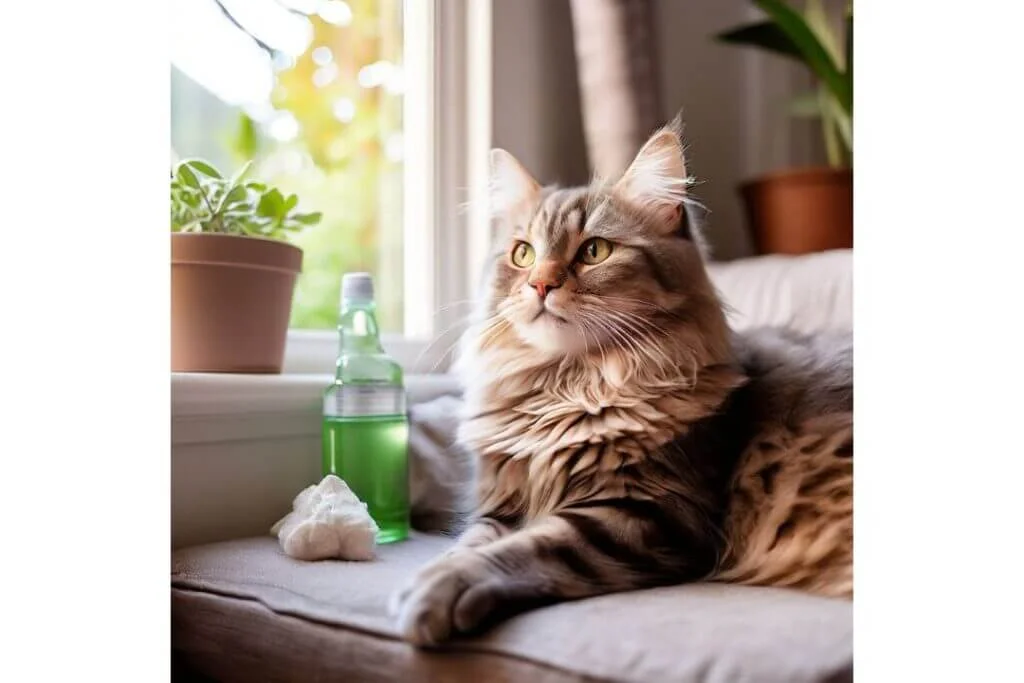
Proper cat litter disposal is crucial for environmental health and sustainability. By avoiding plastic bags and exploring alternative methods like composting, biodegradable bags, and community programs, you can make a positive impact. Embrace these eco-friendly practices and encourage others to do the same. Educating yourself and your community about these sustainable options can lead to widespread adoption and significant environmental benefits. Together, we can reduce our collective environmental footprint and work towards a greener, healthier planet.
FAQs
Is it safe to compost cat litter? Yes, but only certain types of natural, biodegradable litter are suitable. Litter made from materials such as wood, corn, wheat, or paper can be composted. Ensure proper composting practices to kill pathogens, such as maintaining adequate temperature and moisture levels. It’s essential to use separate compost bins for cat litter to avoid contamination with food gardens.
Can I flush cat litter down the toilet? Only flushable litters designed for this purpose should be flushed, and even then, it should be done sparingly to avoid plumbing issues. Many municipal sewage systems are not equipped to handle cat waste, which can contain pathogens harmful to marine life. Always check local regulations and the product’s guidelines before flushing cat litter.
What are the best biodegradable bags for cat litter? Look for bags made from natural materials like cornstarch or paper. Ensure they are certified compostable for best results. These bags break down more quickly and safely than traditional plastic bags, reducing environmental impact. Brands that have certifications from organizations like the Biodegradable Products Institute (BPI) or European Bioplastics are generally reliable choices.
How can I start a community composting program? Gather interested neighbors, find a suitable location, and set up compost bins. Educate participants on proper composting practices, such as balancing green and brown materials and maintaining proper moisture levels. Collaborate with local environmental organizations or government bodies to obtain resources and support. Regularly manage the system collectively to ensure it operates smoothly and benefits the community.
Are there any cat litters that are better for the environment? Yes, natural litters made from materials like wood, corn, wheat, or paper are more environmentally friendly than clay-based or silica gel litters. These natural litters are biodegradable and often compostable, reducing waste. Additionally, they are usually free from harmful chemicals, making them safer for both pets and the environment. Switching to these alternatives can significantly reduce your household’s environmental impact.

